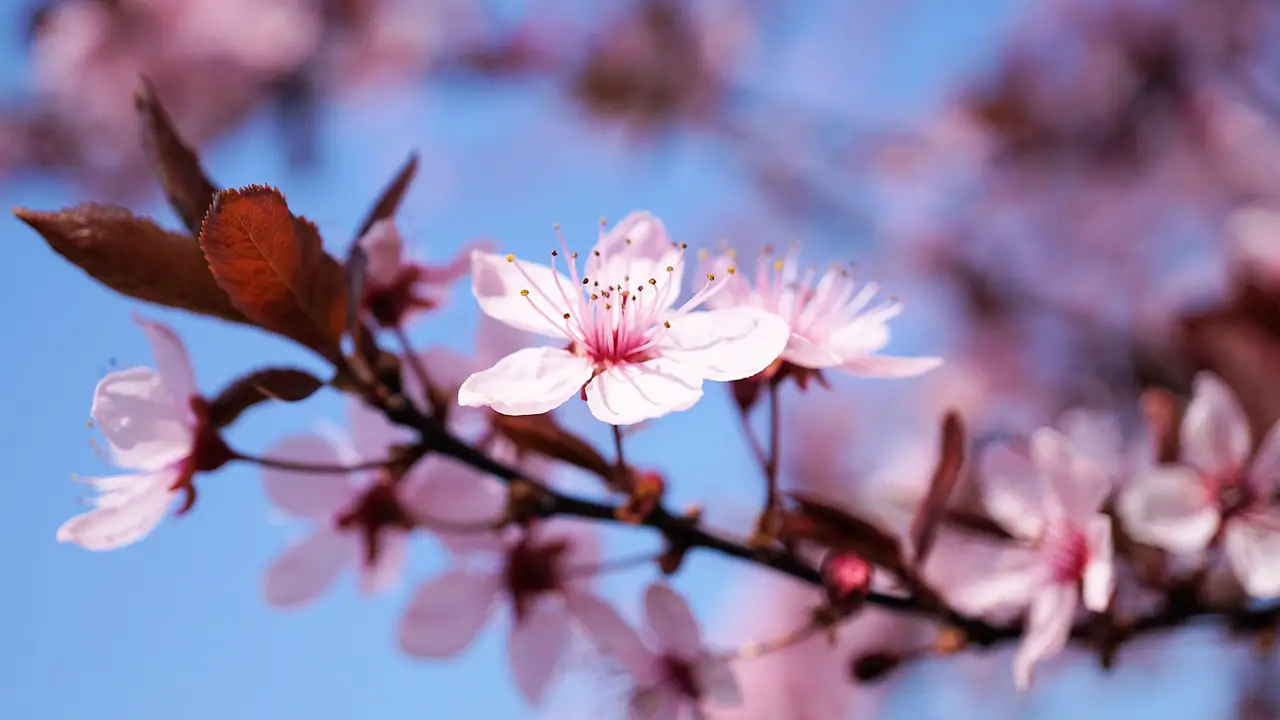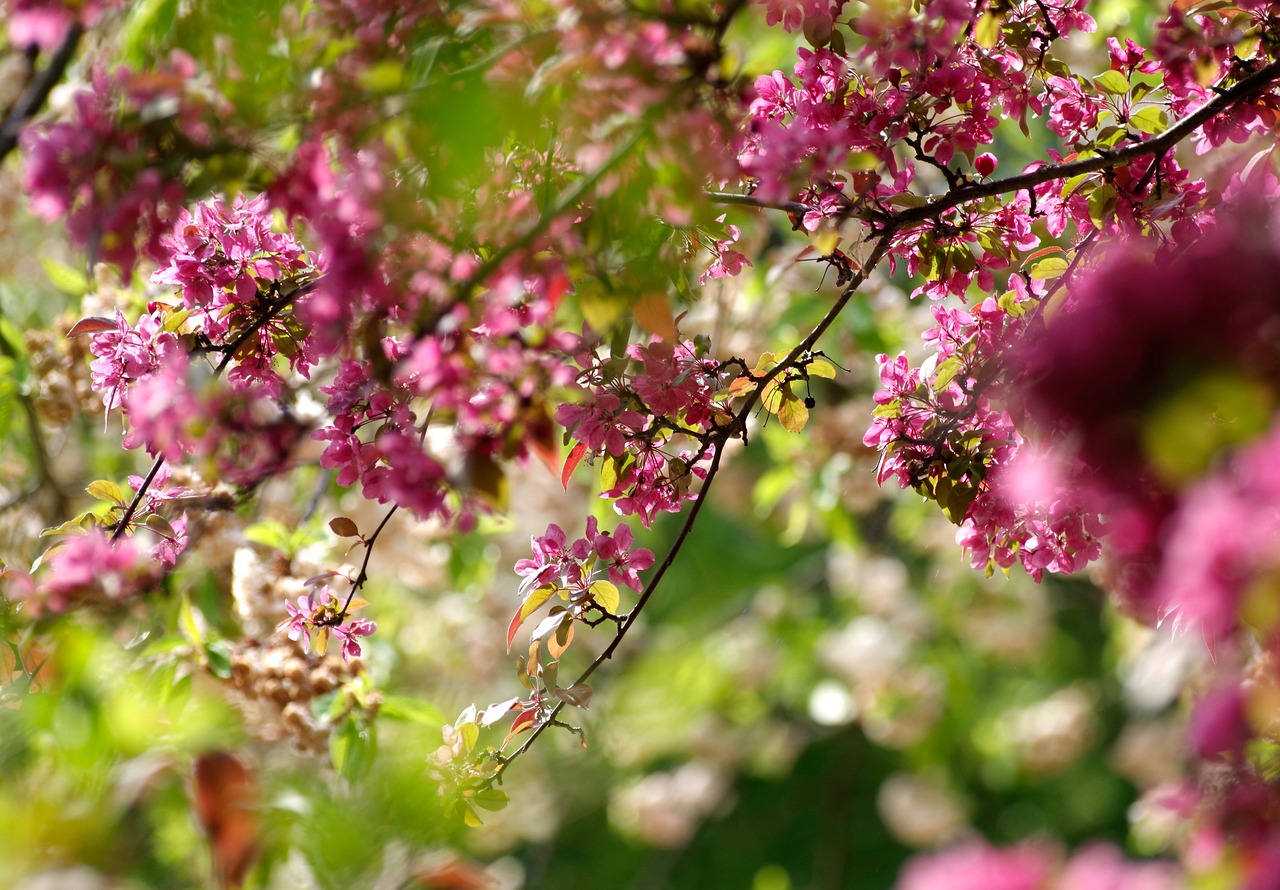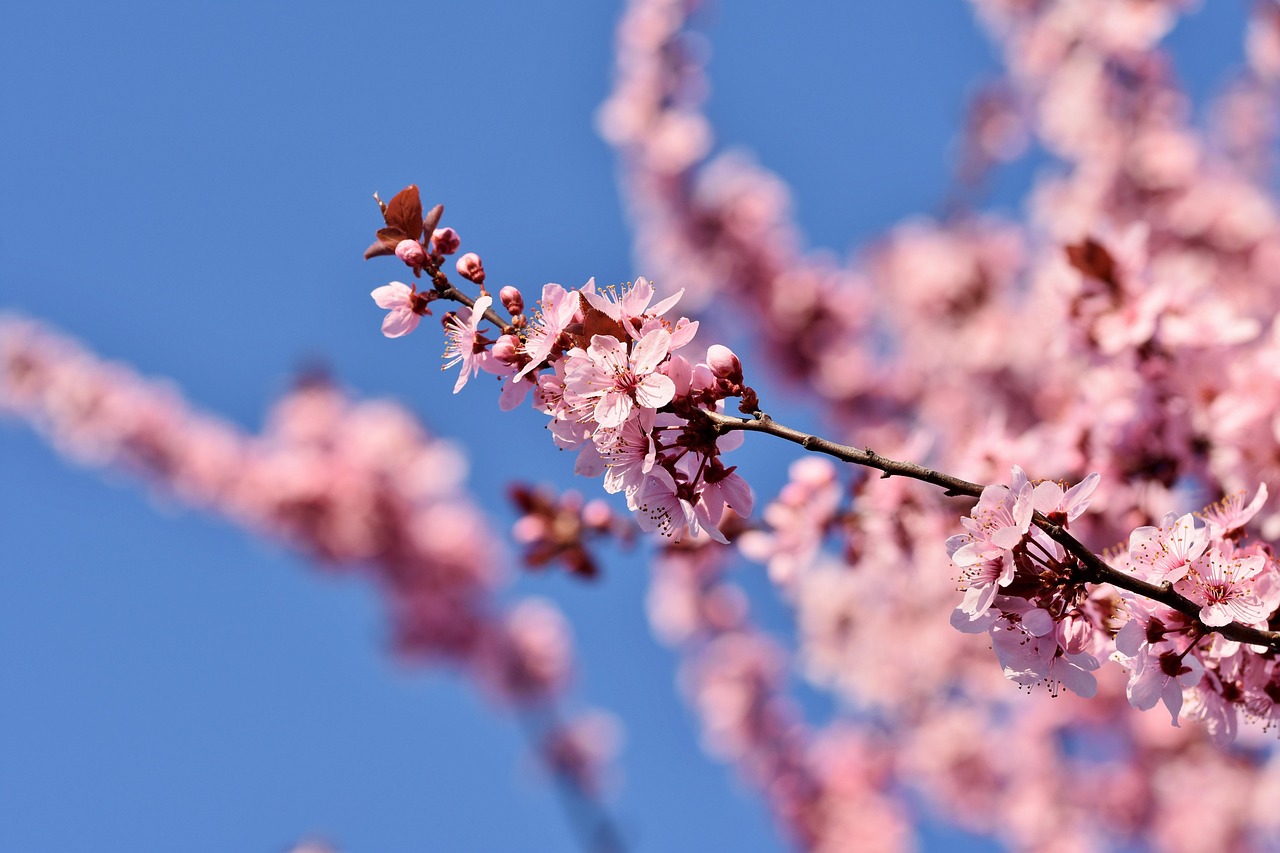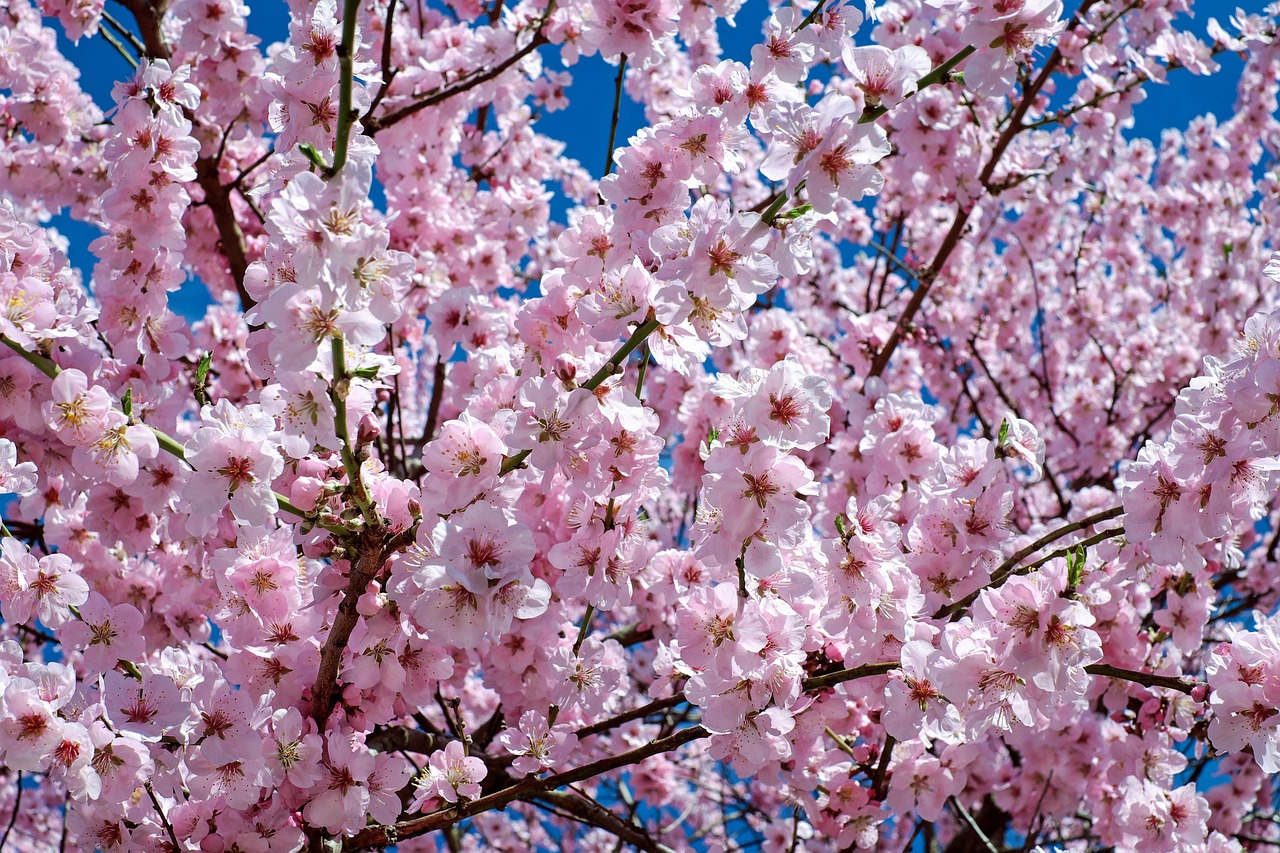Pruning sweet cherry trees is essential for maximizing fruit yield. Proper pruning encourages healthy growth, improves air circulation, and allows sunlight to reach the inner branches, leading to better fruit development. Timing and technique are crucial for successful pruning.
Sweet cherry trees, known for their delicious fruit and beautiful blossoms, are a favorite among gardeners and orchardists alike. Proper care, including pruning, is vital for ensuring that these trees produce a bountiful harvest each year. While many may underestimate the importance of pruning, it plays a crucial role in tree health and productivity.

Pruning involves the strategic removal of certain branches to enhance the overall structure of the tree. This practice helps create a balance between growth and fruit production. When done correctly, pruning can lead to larger fruit, increased yield, and an overall healthier tree. Understanding the best times to prune and the techniques to use can significantly affect your sweet cherry tree’s performance.
Understanding Cherry Tree Growth
Before diving into pruning techniques, it is essential to understand how sweet cherry trees grow. These trees typically have a more upright growth habit and require specific care to thrive. Key factors affecting their growth include:
- Soil quality
- Water availability
- Sunlight exposure
- Temperature
Sweet cherry trees prefer well-drained soil and full sun. They thrive in moderate temperatures but can be sensitive to extreme cold or heat. During their growing season, which usually spans from spring to summer, focusing on health is critical. This is where proper pruning comes into play.

The Importance of Pruning
Pruning serves several purposes for sweet cherry trees. The most significant benefits include:
- Improved Air Circulation: Thinning out dense foliage allows air to flow freely through the tree, reducing the risk of fungal diseases.
- Enhanced Sunlight Penetration: By removing some branches, sunlight can reach inner leaves and fruit, promoting even ripening.
- Increased Fruit Production: Regular pruning encourages the growth of fruit-bearing wood, leading to larger harvests.
- Structural Strength: Pruning helps develop a strong framework, preventing breakage from heavy fruit loads or wind.
These factors collectively contribute to not only a more productive tree but also one that can withstand environmental stressors more effectively.
When to Prune Sweet Cherry Trees
The timing of pruning is as important as the technique used. For sweet cherry trees, the best time to prune is during the dormant season. This typically occurs in late winter or early spring before new growth begins. Pruning during dormancy allows for easier visibility of branch structure and minimizes stress on the tree.

Pruning in late winter encourages new growth in the spring. However, it is crucial to avoid pruning during late spring or summer as this can lead to excessive sap loss and stress on the tree. Additionally, it may make the tree more susceptible to diseases.
Types of Pruning Techniques
There are various techniques employed in pruning sweet cherry trees, each serving a distinct purpose:
| Technique | Description |
|---|---|
| Crown Thinning | This involves selectively removing branches to improve light penetration and air circulation. |
| Crown Raising | This technique removes lower branches to allow access under the tree and prevent competition with other plants. |
| Crown Reduction | This method reduces the height or width of the tree by shortening branches while maintaining its shape. |
| Heading Back | This involves cutting back a branch to just above a bud to encourage bushier growth. |
Each technique has its own benefits and should be chosen based on the specific needs of the tree and the desired outcome.

Incorporating these practices into your sweet cherry tree care routine will undoubtedly lead to a healthier tree and a more fruitful harvest. Understanding when and how to prune is essential for anyone looking to maximize their sweet cherry yield effectively.
Essential Tools for Pruning Sweet Cherry Trees
Having the right tools is critical for effective pruning. Using proper equipment not only makes the task easier but also ensures the health of the tree. Here are some essential tools you should consider:
- Pruning Shears: These are ideal for cutting smaller branches. Choose high-quality, sharp shears to ensure clean cuts.
- Loppers: For branches that are thicker than those suited for shears, loppers provide the added leverage needed for a clean cut.
- Saw: A pruning saw is necessary for removing larger branches. It allows for more significant cuts without damaging surrounding wood.
- Hand Gloves: Protect your hands while pruning to avoid injuries from thorns or sharp branches.
- Safety Goggles: Wearing goggles can protect your eyes from falling debris during the pruning process.
Before beginning the pruning process, ensure all tools are clean and sharp. This helps prevent the spread of diseases between trees and promotes healthier cuts.
Pruning Techniques in Detail
To achieve optimal results, it’s important to master specific pruning techniques. Each technique focuses on different aspects of tree health and fruit production. Here’s a more detailed look at some of these methods:
Crown Thinning
Crown thinning is a technique that involves selectively removing branches to reduce density without altering the overall shape of the tree. This method is beneficial because:
- It improves sunlight penetration throughout the tree.
- It enhances air circulation, reducing the risk of fungal infections.
- It encourages stronger, healthier fruit production.
Crown Raising
Crown raising focuses on removing lower branches, which can hinder access beneath the tree or compete with other plants for nutrients and light. This technique is particularly useful for:
- Creating a clear space for mowing and maintenance.
- Allowing better sunlight exposure to lower fruits.
- Encouraging upward growth of the tree.
Crown Reduction
This technique involves shortening branches to reduce the overall size of the tree while maintaining its shape. Crown reduction is particularly useful in cases where a tree has outgrown its space. Benefits include:
- Improved accessibility for harvesting and maintenance.
- Avoiding potential damage to nearby structures or power lines.
- Promoting new growth and rejuvenation.
Common Mistakes to Avoid When Pruning
Even experienced gardeners can make mistakes when pruning sweet cherry trees. Here are some common pitfalls to avoid:
- Pruning at the Wrong Time: As mentioned earlier, pruning during late spring or summer can harm the tree. Always aim for late winter or early spring.
- Over-Pruning: Removing too many branches can stress the tree and reduce fruit production. Aim for a balanced approach.
- Poor Cuts: Make sure to cut at an angle just above a bud to encourage healthy regrowth. Ragged cuts can lead to disease.
- Ignoring Tree Shape: Maintain the natural shape of the tree when pruning. A well-shaped tree not only looks better but also functions more efficiently.
Signs Your Sweet Cherry Tree Needs Pruning
Understanding when your sweet cherry tree requires pruning is essential for maintaining its health and productivity. Here are some signs that indicate it’s time to prune:
- Overcrowded Branches: If branches are crossing or growing too close together, it may be time to thin out some of them.
- Dead or Diseased Branches: Any signs of disease or dead wood need immediate attention to prevent further spread.
- Poor Fruit Production: If you notice a decline in fruit yield over consecutive seasons, consider evaluating your pruning techniques.
- Unbalanced Growth: If one side of the tree appears to be growing significantly more than the other, corrective pruning can help restore balance.
By recognizing these signs early, you can take appropriate action to ensure your sweet cherry trees remain healthy and productive.
Nurturing After Pruning
After pruning, it’s essential to care for your sweet cherry trees properly. This includes ensuring adequate nutrition and monitoring for pests and diseases. Here are some tips for nurturing your trees post-pruning:
- Fertilization: Consider applying a balanced fertilizer after pruning to support new growth.
- Irrigation: Ensure your trees receive sufficient water, especially during dry spells, but avoid overwatering.
- Pest Monitoring: Keep an eye out for any pests that may be attracted to freshly pruned trees, and take action as necessary.
- Disease Prevention: Apply suitable treatments if any signs of disease appear following pruning.
Nurturing your sweet cherry trees after pruning will help them recover faster and promote robust growth throughout the growing season.
Common Pests and Diseases in Sweet Cherry Trees
To maximize fruit yield, it is crucial to keep sweet cherry trees healthy. One way to do this is by being vigilant about pests and diseases that can harm the trees. Understanding common threats will enable you to take proactive measures. Here are some typical pests and diseases affecting sweet cherry trees:
Common Pests
- Cherry Fruit Fly: This pest lays eggs inside the fruit, causing it to rot. Use traps or insecticides to control their population.
- Spider Mites: These tiny pests thrive in hot, dry conditions. They feed on leaf sap, leading to yellowing leaves. Regularly spray water on the foliage to deter them.
- Scale Insects: These insects appear as small bumps on branches and can weaken the tree. Use horticultural oil to manage infestations.
- Leafhoppers: They can cause leaf curling and stunted growth. Maintaining healthy plants helps reduce their impact.
Common Diseases
In addition to pests, sweet cherry trees are susceptible to various diseases. Here are a few significant ones:
- Bacterial Canker: This disease causes sunken areas on branches and can lead to dieback. Prune affected areas during dry weather and sterilize tools between cuts.
- Brown Rot: A fungal infection that affects blossoms and fruit, leading to decay. Practice proper sanitation by removing mummified fruit and fallen debris.
- Powdery Mildew: This fungal disease appears as a white powdery substance on leaves. Ensure good air circulation and consider using fungicides if necessary.
- Crown Gall: Caused by bacteria, this disease leads to galls on the roots and stems. Avoid damaging roots during planting or pruning to reduce risk.
Effective Pest and Disease Management Strategies
Implementing effective management strategies can help protect your sweet cherry trees. Here are some recommended practices:
Cultural Practices
Cultural practices focus on creating an environment that discourages pests and diseases:
- Proper Spacing: Ensure adequate spacing between trees to improve air circulation and reduce humidity, which can lead to disease.
- Regular Maintenance: Keep the area around the trees clean by removing fallen leaves and fruit. This helps prevent pests from overwintering.
- Soil Health: Maintain healthy soil by adding organic matter or compost, which promotes strong tree growth and resilience against diseases.
Monitoring and Inspection
Regular monitoring is essential for early detection of pests and diseases:
- Visual Inspections: Check trees frequently for signs of pests or disease, such as discoloration, holes in leaves, or abnormal growths.
- Pest Traps: Use traps for specific pests like the cherry fruit fly to monitor their activity levels.
- Soil Testing: Conduct soil tests to check nutrient levels, pH, and other factors affecting tree health.
Nutrient Requirements for Sweet Cherry Trees
Nurturing your sweet cherry trees also involves providing them with the right nutrients. Proper fertilization supports healthy growth and increases fruit yield. Here are key nutrients your trees need:
| Nutrient | Function | Sources |
|---|---|---|
| Nitrogen (N) | Promotes leafy growth and overall vigor. | Blood meal, fish emulsion, urea. |
| Phosphorus (P) | Supports root development and flowering. | Bone meal, rock phosphate. |
| Potassium (K) | Aids in fruit quality and resistance to diseases. | Potaash sulfate, greensand. |
| Calcium (Ca) | Strengthens cell walls and promotes healthy fruit set. | Lime, gypsum. |
The right balance of these nutrients is crucial for the optimal growth of sweet cherry trees. A soil test can help determine the specific needs of your soil and guide your fertilization strategy.
Watering Requirements for Sweet Cherry Trees
Irrigation plays a vital role in maintaining healthy sweet cherry trees. Understanding their watering needs will help you achieve better fruit yields. Here are some key points regarding watering:
- Frequency: Newly planted sweet cherry trees require more frequent watering until established. Mature trees generally need less frequent watering but should receive water during dry spells.
- Deep Watering: Aim for deep watering sessions that encourage deep root growth. This is typically achieved by watering less often but for longer durations.
- Avoid Overwatering: Overwatering can lead to root rot and other issues. Ensure the soil drains well and monitor moisture levels regularly.
By understanding the pests, diseases, nutritional needs, and watering requirements of sweet cherry trees, you can implement effective care strategies that enhance their health and productivity throughout the growing season.
Enhancing Sweet Cherry Tree Yield with Companion Planting
In addition to proper pruning and care, companion planting can further enhance the yield of sweet cherry trees. This method involves planting different species in close proximity for mutual benefits. Here are some beneficial companion plants for sweet cherry trees:
- Garlic: Known for its pest-repellent properties, garlic can deter harmful insects that may affect cherry trees.
- Chives: Similar to garlic, chives can help ward off pests while providing beneficial nutrients to the soil.
- Marigolds: These flowers are excellent for attracting beneficial insects and repelling nematodes.
- Crimson Clover: This cover crop improves soil nitrogen levels and can suppress weeds when planted around cherry trees.
By incorporating these companion plants into your garden, you can create a more balanced ecosystem that supports the health and productivity of your sweet cherry trees.
Pruning for Different Growth Stages
Understanding the specific pruning needs at various growth stages of sweet cherry trees is vital for maximizing fruit yield. Here’s how to approach pruning based on the tree’s age:
Young Trees
For young sweet cherry trees, focus on establishing a strong framework. Key practices include:
- Formative Pruning: In the first few years, focus on developing a central leader and well-spaced scaffold branches.
- Removing Competing Leaders: Ensure that there is one main leader to promote vertical growth and structure.
Mature Trees
Mature trees require maintenance pruning to sustain health and productivity. Consider the following:
- Thinning Older Branches: Remove any branches that are crossing, dead, or diseased to enhance light and air penetration.
- Balancing Growth: If one side of the tree is growing more vigorously, selectively prune to encourage balanced growth.
Older Trees
For older trees, restorative pruning may be necessary to rejuvenate growth:
- Rejuvenation Pruning: This involves cutting back older branches to promote new growth and improve fruit production.
- Removing Suckers: Regularly remove suckers that drain energy from the main tree.
Irrigation Techniques for Optimal Growth
In addition to monitoring watering needs, employing effective irrigation techniques can significantly impact the health of sweet cherry trees. Consider the following methods:
- Drip Irrigation: This method delivers water directly to the root zone, minimizing waste and ensuring deep watering.
- Soaker Hoses: Soaker hoses allow water to seep into the soil gradually, promoting even moisture distribution.
- Mulching: Apply mulch around the base of the tree to retain soil moisture and suppress weeds.
Selecting the right irrigation method can help maintain consistent moisture levels, which is vital for fruit development and overall tree health.
Weather Considerations and Their Impact on Pruning
The weather can significantly influence how and when you should prune your sweet cherry trees. Here are some key considerations:
- Frost Dates: Be aware of local frost dates, as pruning too early can expose trees to frost damage. Always wait until after the last frost to begin pruning.
- Rainy Seasons: Avoid pruning during rainy periods, as wet conditions can lead to increased disease susceptibility.
- Drought Conditions: If facing drought, be cautious about heavy pruning as it may stress the tree further.
Understanding these weather-related factors will help you make informed decisions about when to prune and how to care for your trees throughout the year.
Conclusion
Pruning sweet cherry trees is an essential practice that significantly impacts their health and fruit yield. By understanding the various techniques, timing, and care strategies discussed in this article, you can cultivate robust trees that produce delicious cherries year after year. Proper pruning not only enhances fruit production but also promotes a healthier tree structure.
Incorporating companion planting, monitoring for pests and diseases, and understanding nutrient requirements will further support your efforts. With these comprehensive strategies, you can maximize your sweet cherry tree yield, ensuring a fruitful harvest that delights both you and your family. Embrace these practices to enjoy the beauty and bounty of sweet cherry trees in your garden.
